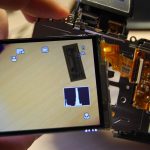
Introduction
The evolution of wireless communication technologies is a driving force behind the rapid advancement of the digital age. From 1G to 5G, each generation has brought significant improvements in terms of high-speed data rates, latency, and connectivity. As we set our sights on the next frontier, 6G, it becomes clear that one of its crucial components will be machine-type wireless communication. This article delves into the key enablers to make machine-type wireless communication a reality in the 6G era.
Understanding 6G and Machine Type Wireless Communication in 6G
6G, short for “Sixth Generation”, is the future latest wireless technology generation expected to build upon the foundation laid by 5G but with incredibly high data speeds, lower latency, and more advanced capabilities. This cellular network technology will aim to provide more reliable, secure, and efficient connectivity solutions than their previous counterparts.
Machine Type Communication, often termed Machine-to-Machine (M2M) communication, plays a significant role in 6G networks. While previous generations have predominantly focused on enhancing human-to-human and human-to-machine interactions, 6G is expected to benefit a diverse range of machine-type devices, spanning from IoT devices and sensors to autonomous vehicles and industrial robots. For this vision to materialise, several key enablers must be in place, given below.
Crucial Enablers for Machine Type 6G Wireless Communication
Various key enablers can prove the 6G network as the latest and most advanced technology – a milestone in cellular network technology. However, 6G technology is still being researched and developed; the following enablers might change based on technological advancements, regulatory considerations, and market demands. Some of the key enablers include:
- Higher Data Rates
6G is expected to offer significantly higher data rates than their predecessors–potentially reaching terabits per second (Tbps) speeds. Such incredible speeds would enable extremely high-resolution content streaming, ultra-HD virtual reality, and other data-intensive applications.
- Global Connectivity and Coverage
One of the notable enablers of the 6G wireless network involves providing more ubiquitous connectivity, especially in remote and underserved areas, including rural areas. These features can be achieved by utilising satellite networks and other innovative solutions, enhancing user experiences and productivity.
- Ultra-Reliable Low-Latency Communication
Based on the speculative points of previous generations, 6G will aim to achieve ultra-reliable, low-latency communication–paramount for machine-type communication. A broad range of applications, including remote surgery, demand extremely low latency and high reliability for safe and efficient operations. 6G networks will tackle these issues by minimising signal propagation delays, optimising network routing, and potentially incorporating advanced error correction mechanisms.
- Massive Machine Type Communication Connectivity
One of the defining and key features of 6G will be its ability to connect a massive number of devices concurrently. This would require various techniques like advanced multiple access schemes, improved interference management, and dynamic spectrum sharing to ensure the network can support the sheer volume of connections anticipated in the 6G era.
- Enhanced Energy Efficiency and Sustainability
The proliferation of machine-type devices poses a significant challenge regarding energy consumption and environmental sustainability. 6G will likely resolve these issues with improved energy efficiency and incorporating better power management strategies. Implementing these techniques would prevent placing undue stress on energy resources.
- Edge Computing and Distributed Intelligence
Machine-type communication often involves real-time data processing and decision-making. 6G networks will find solutions by integrating edge computing and distributed intelligence. Edge servers, closer to the devices, will process data locally, reducing latency and offloading the core network. This approach also enhances privacy and security by minimising the need to transmit sensitive data over long distances.
- Enhanced Security and Privacy
Robust security and privacy mechanisms are indispensable in machine-type communications due to their integration into critical systems and personal lives. 6G networks will need to implement end-to-end encryption, secure authentication protocols, and advanced intrusion detection systems to safeguard communication and data exchanged between multiple machines.
- Advanced Antenna Technologies
To accommodate the diverse range of machine-type devices, 6G will require advanced antenna technologies. Many advanced systems and intelligent antenna arrays will enable the network to effectively cater to different device types and communication scenarios. These technologies can enhance signal strength, reduce interference, and optimise spectral efficiency.
- Cognitive Radio and Spectrum Sharing
Highly efficient spectrum utilisation is a critical enabler for machine-type communication in 6G. Cognitive radio systems that intelligently detect and utilise available spectrum bands will be essential. Moreover, spectrum-sharing mechanisms allow different devices to coexist harmoniously, ensuring high-priority seamless applications and less demanding services without undue interference.
- Network Slicing and Customisation
6G will likely introduce the concept of network slicing to a greater extent. Network slicing can isolate virtual networks tailored to specific applications or industries and enable machine-type communication to coexist with other communication types. Customisation will ensure the unique requirements of each application are met without compromise.
Concluding Remarks and Future Iterations
Machine-type wireless communication in 6G holds a transforming force in modern wireless network technology and industries. These remarkable potentials require the implementation of several vital enablers–shaping the capabilities of 6G networks. As the wireless landscape evolves through these enablers, the 6G will bridge the gap between human-centric and machine-centric communication, ushering in a new and advanced era of connectivity.




















